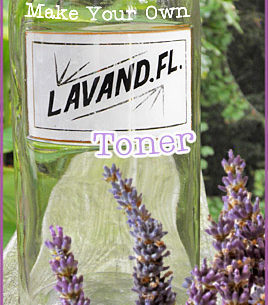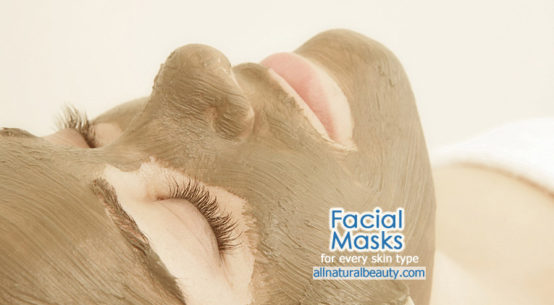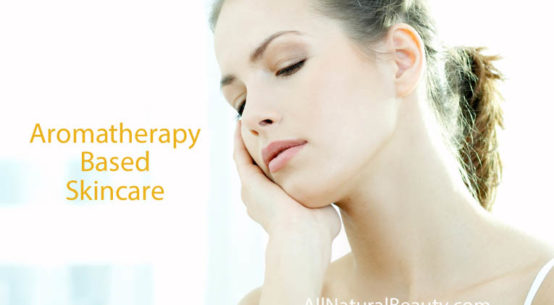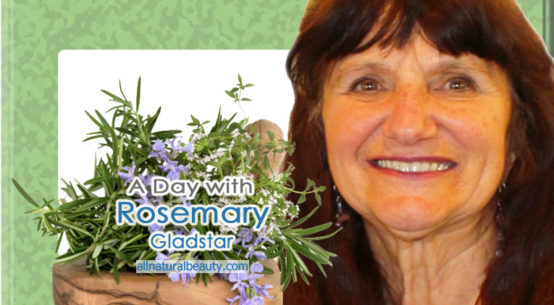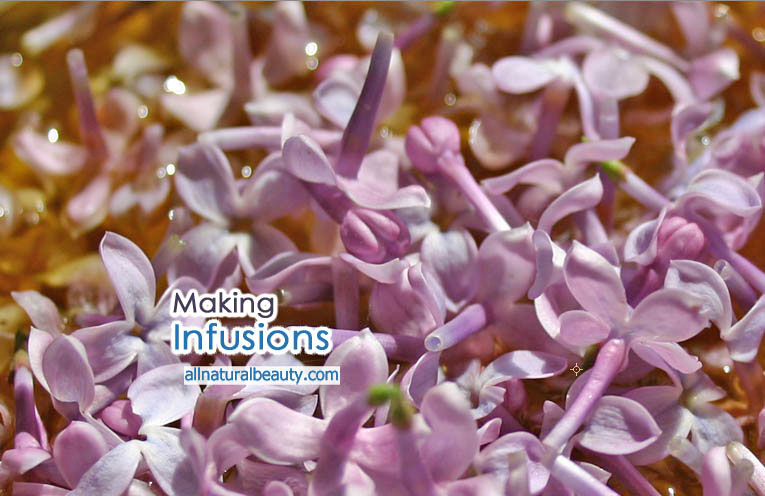
Once the heat of summer arrives here in Michigan, my deck is filled with potted flowers, plants, and oh yes, a bunch of canning jars filled with herbs infusing themselves (with the help of the sun!) in oil. There’s something magical in the process. You start with a jar of plain oil, and by the end of the season, some of the jars have become as colorful as the flowers themselves- emerald, jade, orange, gold, while others really haven’t changed their appearance at all. Yet they all have one common denominator: they have become liquid gold. Ready to be used to heal, to scent, or flavor.
Of course, summer is short and sweet here in Michigan. It seems like the plants just get to the harvest stage, and it’s fall already. With that in mind, I’d like to go over two different ways I go about infusing herbs into oil, why I do it, and what I (and you too!) can do with the finished product.
My main purpose for infusing oils is for use in balms and salves. They can be used for healing dry and damaged skin, protect babies bottoms, heal poison ivy and oak, relieve burns and bug bites, and provide soothing after-shower and body massage oils.
Each herb has it’s own purpose and benefit. The following is a list of herbs commonly infused, and what the beneficial property is.
Arnica – The flowers are infused and the oil is used externally to relieve pain from bruises and sprains, but not on broken skin.
Chamomile, Common & Lavender – The flower heads are infused and the oil is used for it’s antiseptic, calming, and soothing properties.
Coltsfoot & Horsetail – The leaves contain silica, which is also known as a vegetable collagen, are infused and the oil is used in skin and hair products. It is believed to have regenerative properties.
Comfrey – High in allantoin, nature’s tissue and bone healer, the leaves and root are infused and used for wounds, and for tissue regeneration.
St John’s Wort – Fresh flowers are infused and the oil is used to soothe skin. Good for sun burns and cuts/scrapes.
Calendula – Flowers are infused and the oil is used for cuts, scrapes, insect bites, and inflammation.
Jewelweed – The whole plant is infused fresh, and the oil is used to treat poison ivy, oak, and stinging nettles.
Rose Petals – Petals are infused and the oil is used for it’s skin soothing and softening properties.
However you choose to infuse, there are a few very important steps you must take.
- First and foremost: You must sterilize all jars and utensils used in the process.
- Fresh herbs must be slightly wilted before infusing. Any moisture in the oil will cause mold. I harvest my herbs at high noon if using above ground parts, and early morning if using the roots. My belief is that the oil content is highest at the top of the plant at midday, and highest in the root early morning. Roots need to be thoroughly washed and chopped. Once harvested, I place on clean paper towels to absorb any moisture from the plant. I also place one on top and gently press. I let it sit for a couple of hours and then place in my oil.
- Dry herbs may be used as is in the oil.
- Always check your herbs for any foreign substances before adding to the oil.
For solar infusing, use 1 cup of fresh herbs or ½ cup of dried in 1 quart of virgin olive or coconut oil. Stir to make sure the herbs are fully immersed in the oil. Leave ½ inch head space and cap tightly. Place in an area where the jar receives at least six to eight hours of sunlight a day. Each day, I remove the cap carefully and wipe the top of the jar with a paper towel to remove any moisture that may have accumulated. I also shake the jar once daily. Allow to set for at least 1-2 weeks, or until you notice the plant material is “used up”. From there you take the jar and pour into another sterilized jar through a sieve and cheesecloth. I always squeeze the herbs to get “the good stuff”. Look carefully at the jar for any bits of herbs remaining. You may have to strain again. Add 1 teaspoon of Vitamin E mixed Tocopherols, an ¼ teaspoon Rosemary Oil Extract to each quart jar of finished oils to prevent oxidation/rancidity. From there you can use as is, or repeat the infusing process to obtain a stronger infusion. I like to infuse my oils at least 4 times.
Optional Method: Prepare herbs and jars/utensils as above. With this method, I use a crock pot, and usually use pint jars, and infuse 5 different herbs at a time. I set the crock pot to low, and place the jars inside with caps on, and set the timer for 8 hours. When cool, I check for moisture, strain and add my Vitamin E and Rosemary Oil Extract (half the amount for pint jars).
Store in a cool, dark place.
That’s pretty much it. The one thing I have found is it can get very addicting. I now infuse different herbs and flowers for scent. Mint and Thyme with all their varieties have become my new favorites. They are wonderful in massage oils. Sweet Grass is very nice and Vanilla Grass is sweet and spicy. I add these to body butters along with essential oils. Vanilla beans infused in virgin coconut oil is yummy, and I’m going on my second year of infusing the same fractionated oil with a Bourbon Rose I’m growing. It’s getting pretty strong! This year I purchased a Damascena Rose that I hope to do the same thing with.
There is so much to experiment with. Sure, there will be failures (like when I tried to infuse Tuberose flowers in jojoba, or scented Geraniums…yuck!), but there will be great successes.
Not only will your body be grateful, but you’ll get caught up in something magical, naturally!



